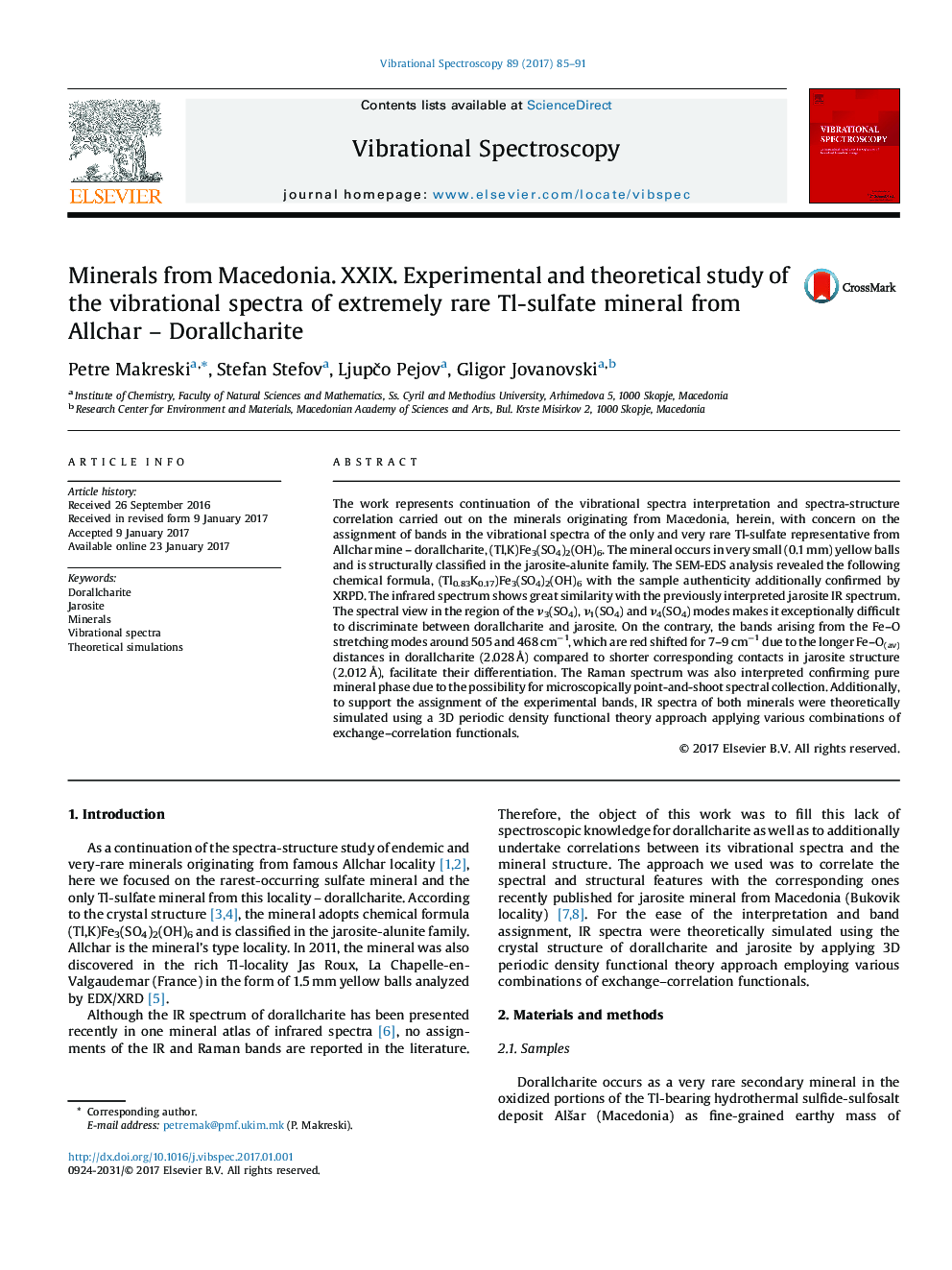| Article ID | Journal | Published Year | Pages | File Type |
|---|---|---|---|---|
| 5141981 | Vibrational Spectroscopy | 2017 | 7 Pages |
Abstract
The work represents continuation of the vibrational spectra interpretation and spectra-structure correlation carried out on the minerals originating from Macedonia, herein, with concern on the assignment of bands in the vibrational spectra of the only and very rare Tl-sulfate representative from Allchar mine - dorallcharite, (Tl,K)Fe3(SO4)2(OH)6. The mineral occurs in very small (0.1 mm) yellow balls and is structurally classified in the jarosite-alunite family. The SEM-EDS analysis revealed the following chemical formula, (Tl0.83K0.17)Fe3(SO4)2(OH)6 with the sample authenticity additionally confirmed by XRPD. The infrared spectrum shows great similarity with the previously interpreted jarosite IR spectrum. The spectral view in the region of the ν3(SO4), ν1(SO4) and ν4(SO4) modes makes it exceptionally difficult to discriminate between dorallcharite and jarosite. On the contrary, the bands arising from the Fe-O stretching modes around 505 and 468 cmâ1, which are red shifted for 7-9 cmâ1 due to the longer Fe-O(av) distances in dorallcharite (2.028 Ã
) compared to shorter corresponding contacts in jarosite structure (2.012Â Ã
), facilitate their differentiation. The Raman spectrum was also interpreted confirming pure mineral phase due to the possibility for microscopically point-and-shoot spectral collection. Additionally, to support the assignment of the experimental bands, IR spectra of both minerals were theoretically simulated using a 3D periodic density functional theory approach applying various combinations of exchange-correlation functionals.
Related Topics
Physical Sciences and Engineering
Chemistry
Analytical Chemistry
Authors
Petre Makreski, Stefan Stefov, LjupÄo Pejov, Gligor Jovanovski,
